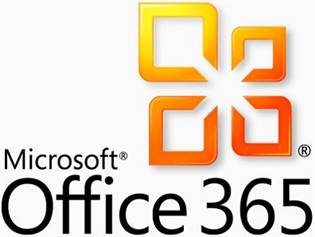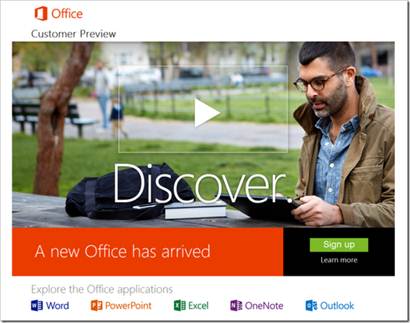Not content with unleashing a new operating
system on the world, Microsoft has unveiled a new version of office, too. It
has a fresh look, dozens of new features and makes a huge shift towards cloud
computing. Jonathan Bray, Barry Collins and Tim Danton reveal everything you
need to know about office 2013.
Office 2013: in the cloud
Microsoft CEO Steve Ballmer insists that
Office 2013 is the company's first product to be "designed from the get-go
to be software as a service", and there's plenty of evidence to support
this. From cloud-based subscriptions for consumers, to Office applications
"streamed" over the internet, to the full integration of SkyDrive and
Skype, Office can no longer be accurately referred to as a desktop suite.
Office 365 for consumers
Business users of Office may already be
familiar with Office 365, the online subscription suite that gives you access
to both the desktop and web versions of the Office applications for a set
monthly fee. That model is now being extended to consumers. In fact, if you
sign up for the beta of Office 2013, you'll be enrolled into a (currently free)
subscription service called the Office 365 Home Premium Preview.

Office 365 Home Premium Preview allows you
to install Word, PowerPoint, Excel, Outlook, OneNote, Access and Publisher on
up to five PCs - and you don't even need to wait for the software to finish
downloading and installing on your first PC to get going with the new
applications. This is down to a new feature called Office on Demand, which is
available on both consumer and business subscriptions. It uses virtualization
to provide "streaming" versions of the full Office apps - not the
feature-restricted Office Web Apps we've seen before from the moment you click on
the installer. So, you can start tapping out your first Word 2013 document
within a minute or two of starting the download, even if the installation
doesn't complete for another half an hour or more.
The Office on Demand versions of the apps
aren't quite as responsive as a local installation, and we'd be wary of doing
any heavy-duty work on them, such as embedding videos in PowerPoint slides or
serious number crunching in Excel. Nevertheless, getting access to full- fat
Office apps over even a modest broadband connection is impressive, and it isn't
only handy during installation.
If you're working away from home without
your regular PC or laptop, Office on Demand can be accessed from any Windows 7
or 8 PC, via https://officepreview.microsoft.com.
Click Create New, select your Office application of choice, and a streaming
version of the app is "installed" onto your temporary PC home. It
takes a minute or so to download the necessary files, but once this is
complete, you get a full version of the app and access to any documents in your
SkyDrive folders. We even managed to install an Office on Demand version of
Word 2013 on an Atom-powered Windows 7 Starter netbook, and it was perfectly
capable of lightweight document editing. Once you've finished your work,
there's no trace of the application or your documents on the host machine.

The
consumer beta of Office 2013 arrives in the form of Office 365 Home Premium,
which can be installed on up to five PCs.
Office web apps
Alongside the new Office on Demand service,
there are revamped versions of the browser-based Office Web Apps that were
launched with Office 2010. These have been redesigned with the Spartan, white
ribbon interface that’s common across all the Office 2013 apps, but appear to
be functionally identical to their predecessors. In other words, feature-
stripped equivalents of Word, Excel, PowerPoint and OneNote that are usable
only for viewing documents and light editing.
We'd much prefer to work in the Office on Demand
apps than the Web Apps, but the Web Apps could remain a fallback option for
those who want to make a small change to a document, or who can't run Office on
Demand because they're using a Windows Vista PC or older. They'll also remain
the only cloud-based version of Office apps open to those who buy Office 2013
as a straight software purchase, rather than a subscription.